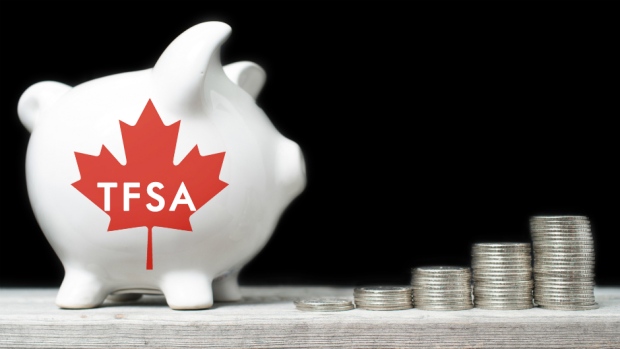Dec 13, 2019
Payback Time: As contribution room grows, the TFSA is the gift that keeps on giving
By Dale Jackson

2020 brings good cheer for investors who like to squeeze the most out of their tax-free savings accounts. As of Jan.1, total contribution room will be extended by $6,000.
And what’s not to love about a TFSA? Funds can be withdrawn at any time and investment returns – be they capital gains on equities or income from dividends and fixed income – are never taxed.
In comparison, half of capital gains on equities in non-registered accounts are taxed and income is fully taxed. Dividends are also subject to full taxation with the exception of a tax credit on eligible payouts.
Even the much-loved registered retirement savings plan (RRSP) has tax strings attached. While contributions can be deducted from current income, those contributions – along with the returns that are generated over the years – are fully taxed when they are withdrawn in retirement.
Like the RRSP, a TFSA can hold just about any type of investment including stocks, bonds, mutual funds, exchange-traded funds (ETFs), real estate investment trusts and even options. Most trading platforms offer tutorials on how to invest like big institutional investors, and how to create entire diversified portfolios.
It is important to note, however, that non-Canadian dividends are subject to a withholding tax on behalf of the U.S. Internal Revenue Service (IRS). That includes the big U.S. blue-chip companies that Canadians love to own. It also includes U.S. mutual funds or ETFs, and even Canadian mutual funds and ETFs that hold U.S. equities.
From a tax perspective, the closest thing to a TFSA available to the average Canadian is the principal residence tax exemption, which allows Canadians to avoid paying any tax on the capital gains they generate from the sale of their principal residences.
The TFSA was born from the ashes of the 2008 global financial meltdown and consequent market plunge in an effort by the federal government to encourage Canadians to get back into the financial markets. Since then, allowable contribution levels have crept up each year. As of Jan.1, the total contribution limit for anyone who was at least 18 years old in 2009 is now $69,500. Inflation adjusted contribution limits are expected to continue rising in future years, although Ottawa gives no guarantee and increases could end at any time.
Contribution space from TFSA withdrawals can be reclaimed the following calendar year. Over-contributions are subject to penalties from the Canada Revenue Agency (CRA). If you want to know your personal limit, the CRA provides them in annual Notice of Assessments on individual tax returns, and for individual tax payers who set up a CRA online account. A word of warning: contribution limits posted by the CRA are usually for the previous year, so be sure to include contributions made in the current year.
According to the CRA, only 10 per cent of TFSAs are maxed out. If yours is full, consider using unclaimed space in the TFSA account of a spouse or child 18 years or older.
The TFSA was originally intended as a short-term savings tool for big purchases like vacations, swimming pools or post-secondary education. What it has become is a retirement savings dynamo. Considering the benchmark S&P 500 Index has more than tripled in value since the TFSA was introduced it has had the ability to compound tax free over a long period of time.
Savers who continue to make contributions in future years can look forward to a tax-free source of retirement income. That’s a big deal considering RRSP income is fully taxed in retirement. If RRSP saving grow too much retirees could find themselves in a high tax bracket and even be forced to make minimum withdrawals that could result in Old Age Security clawbacks.
With proper planning, the TFSA and RRSP can complement each other. Over time, RRSP contributions can be restricted to limit withdrawals to the lowest marginal tax bracket, and TFSA withdrawals can provide the rest of the income needed in retirement.
It’s hard to know how to maintain that balance, but one popular strategy involves making RRSP contributions and adding the tax refund to a TFSA. Contributions can be monitored and shifted over time as needed.
The RRSP contribution deadline for those wanting to reduce their 2019 tax bill is March 3, 2020 – but there’s plenty of time for that.
Payback Time is a weekly column by personal finance columnist Dale Jackson about how to prepare your finances for retirement. Have a question you want answered? Email dalejackson.paybacktime@gmail.com.







